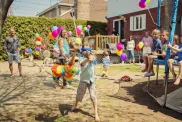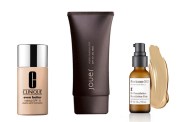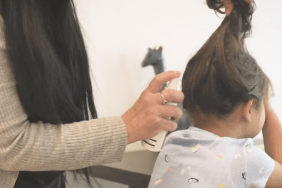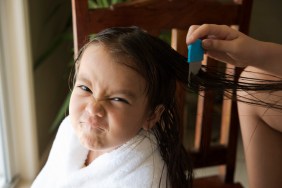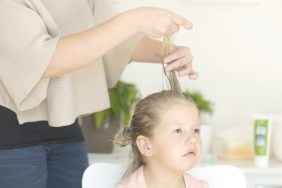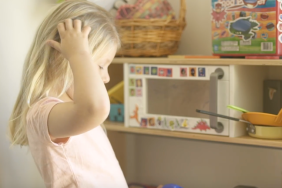How to get rid of lice in your kid’s hair:
1. Medication
Finding the best lice treatment may require a little trial and error. Until now, head lice treatment involved over-the-counter permethrin-containing products. But, in cases where the lice is resistant to OTC lice treatments, there are a variety of prescription medications for lice treatment, such as topical Benzyl alcohol, spinosad, and ivermectin, that continue to be very effective against head lice. It is important to follow the directions very carefully. Some of these medications will require a second treatment 7 to 10 days later because some lice may survive the first head lice treatment.
2. Wet combing
You can avoid insecticides if you go with this option, however, it’s a very time-consuming process. Wet-combing involves wetting the hair and adding a lubricant, such as conditioner or olive oil. You then comb through the hair diligently for 15 to 30 minutes, removing all lice and nits. This process needs to be repeated every three to four days for two weeks after you see any adult lice. In some cities, you can hire a professional lice checker to perform this treatment for you.
How to get rid of lice on bedding, clothing & toys?
Lice treatment for clothing, bedding, towels, and stuffed animals includes washing every item in hot water, then drying each one in an electric drier on the hot setting. Dry cleaning is also effective for getting rid of lice. Any item that can’t be washed should be sealed in a plastic bag for two weeks to suffocate the lice.
What are head lice?
Head lice are tiny bugs called Pediculus humanus capitis (or, more simply put, the human head louse). While head lice are not dangerous and do not spread diseases, they can very itchy and uncomfortable. The head louse is a tiny gray-white insect. The female head louse lives for about one month but can lay 7 to 10 eggs per day. The eggs are called nits. The eggs attach to the base of the hair near the scalp and hatch in about eight days.
How do children catch lice?
Head lice is spread through direct person to person contact. Despite what you may hear, head lice do not fly or jump and cannot be spread from person to person via pets. Typically, lice is spread through direct contact with the infected person’s hair. It can also be spread by contact with brushes, clothing, bedding, and combs.
What do head lice look like?
Head lice can appear in three forms. Nits are microscopic lice eggs that attach to the hair shaft; they are easily mistaken for dandruff. Once the eggs hatch, the nymphs appear grayish tan in color; 12 days after hatching, lice are considered adults and are approximately the size of a sesame seed. (You can see photos here.)
What are the symptoms of it?
Many people with head lice do not have symptoms, which is why many school administrators choose to have students regularly checked for lice. When symptoms occur, they can include itching and skin irritation of the scalp, neck, and ears. Head lice are diagnosed by direct examination of the hair for lice and nits.
How do you prevent head lice?
Talk to your children about not sharing hair ties, brushes, combs, and hats. There are also natural lice-repelling shampoos and sprays that you can use with tree oil; there’s no medical proof that they actually work, but they’re not harmful to your child and they may help prevent head lice.
More Health Information:
Why Your ADHD Child Should Be Allowed to Move Around at School
How to Stick to Your Kid’s Bedtime Routine
6 Secrets to Avoiding the Flu



